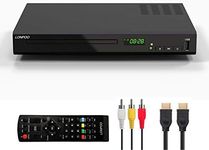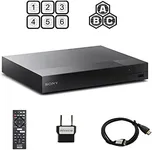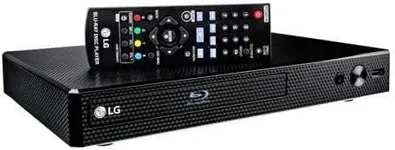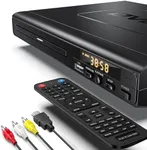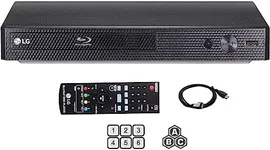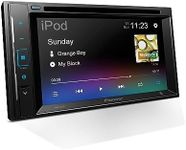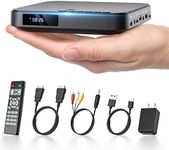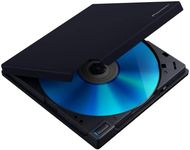Buying Guide for the Best Dvd Players
Choosing a DVD player might seem straightforward, but there are a few important features to consider to make sure you get the best experience for your needs. Think about how you plan to use the player, what kind of discs you want to play, and what devices you want to connect it to. Understanding the key specifications will help you pick a DVD player that fits your setup and viewing habits.Disc CompatibilityDisc compatibility refers to the types of discs the DVD player can read, such as standard DVDs, CDs, rewritable discs, and sometimes even Blu-ray or VCDs. This is important because not all players can handle every disc format. Some people have collections of older or special-format discs, so it's good to check if the player supports them. If you only plan to watch standard DVDs, a basic player will do, but if you have a variety of discs, look for a model that lists all the formats you need.
Video Output OptionsVideo output options are the types of connections the DVD player offers to hook up to your TV or projector, such as HDMI, component, or composite outputs. This matters because your TV might only support certain types of connections. HDMI provides the best quality and is common on modern TVs, while older TVs might need composite or component connections. Check what inputs your TV has and choose a DVD player that matches, so you can easily connect and enjoy your movies.
Upscaling CapabilityUpscaling capability means the DVD player can enhance standard DVD resolution to look better on high-definition TVs. This is important if you have a large or HD TV, as regular DVDs can look blurry or pixelated on big screens. Some players can upscale to 720p, 1080p, or even higher. If you want your DVDs to look as sharp as possible, look for a player with good upscaling. If you have a smaller or older TV, this feature may not be as important.
Audio Output OptionsAudio output options refer to the ways the DVD player can send sound to your TV or sound system, such as analog, digital coaxial, or optical outputs. This is important if you want to connect to a home theater system for better sound. If you just use your TV speakers, any basic output will work, but for surround sound or higher quality audio, look for a player with digital audio outputs that match your sound system.
USB and Media PlaybackSome DVD players have USB ports or SD card slots that let you play digital media files like videos, music, or photos from a flash drive or memory card. This is useful if you have digital content you want to watch without burning it to a disc. If you like the idea of playing downloaded movies or family videos, look for a player with these features and check which file formats it supports.
Region Code SupportRegion code support determines which DVDs the player can read based on where they were made or sold. DVDs are often locked to specific regions, so a player from one country might not play discs from another. If you have DVDs from different parts of the world, look for a region-free or multi-region player. If all your discs are from your home country, this is less of a concern.
Remote Control and Ease of UseThe remote control and overall ease of use affect how simple it is to operate the DVD player. Some remotes are more intuitive, and some players have on-screen menus that are easier to navigate. If you want a hassle-free experience, look for a player with a well-designed remote and clear menus, especially if the user is not very tech-savvy.

